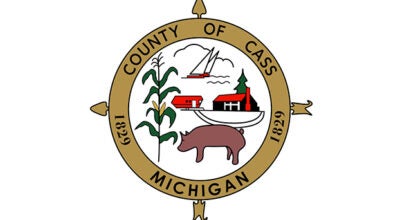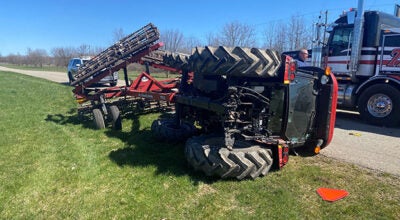Dowagiac $37 million bond proposals discussed at community meeting
Published 10:04 am Friday, October 2, 2015

Leader photo/TED YOAKUM
Union School’s Superintendent Paul Hartsig answers a question from one of the members of the audience during Wednesday’s public meeting held at the high school media center. More than 30 people from around the community were at the presentation about the upcoming bond pair of bond proposals, which are intended to pay for more than $37 million worth of improvements to district facilities.
Members of the community came prepared with questions — and school officials with answers — about the district’s upcoming $37 million bond proposals during a public meeting Wednesday night at Dowagiac Union High School.
More than 30 people attended the Dowagiac Union Schools Superintendent Paul Hartsig’s presentation inside the high school media center about the two bond proposals on the ballot on Nov. 3 election, sharing how, if passed by voters, they will affect the future of many of the district’s facilities. Several people in the audience also asked the administrator questions about the two proposals — with some expressing their apprehension about the odds of their passage next month.
The two bonds, a 2.5 millage increase and 1 millage increase respectively, are designed to fund more than $37 million worth of renovations and improvements to Dowagiac Union High School, the district’s four elementary school buildings, and Chris Taylor Alumni Field. The emphasis of the work will be on safety and security improvements, installation of new heating and cooling systems, updates to the schools’ technology infrastructure and additional ADA and Title 9 compliance.
With the ages of the five buildings in question ranging from 54 years (Union High) to 69 years old (Sister Lakes), all of these structures are in dire need of work, Hartsig said in his presentation.
“They’re all designed well,” Hartsig said. “They were all built well, they are all maintained well…but their age, the age is what is getting to them.”
The superintendent also talked about some of the questions the public has frequently asked his office about the bonds, including about when, if they are passed, any renovation work would actually begin.
According to project consultant Michael Kounelis, the Michigan Vice President of Skillman construction management, architects with 7GenAE, the design firm working with the district, will work with school staff and administrators to come up with floor plans for the buildings. The district expects this and bidding work to be wrapped up by summer of 2016, when construction is tentatively slated to begin.
The renovation work at the high school is expected to take around two years to complete, with work to the elementary buildings being phased in along the way.
“Students and construction work do not mix, and neither does staff,” Kounelis said. “Wall separators will have to be put in place, renovation work performed…we’ll have to go through the steps and processes to get occupancy in parts of the building. That will be done in a phase manner.”
All construction is expected to be completed between 36 to 48 months from the starting date, Kounelis added.
One of the Dowagiac residents in attendance that evening, Don Blackmond, questioned some of the costs associated with the project, including the estimated $4 million devoted toward architectural and construction management fees, along with the $2 million associated with the issuing of the bonds themselves.
“Those things, like the bonding fee, those are required,” said Larry Crandall, a former Union Schools superintendent serving as a consultant for the project. “This isn’t something unique for this proposal for Dowagiac. It’s one of those ‘necessary evils.’ We all wish we didn’t have to pay them, but it’s no different for when you build or purchase a house — it’s not just the cost of construction. There are additional fees you have to pay.”
Another member of the audience, Diane Barrett-Curtis, asked the administrators if they had a “Plan B” in mind should the proposals be voted down by the public, noting that many district bond issues have failed on their first attempt before voters.
Hartsig responded by saying that the district would continue to try and address building issues piecemeal, according to a 20-year facility plan they have in place. However, leaders would still likely pursue another bond in the future in order to provide a long-term solution, he said.
“A lot of the stuff on the 20-year facility plan is still there; the needs are still there,” he said.






